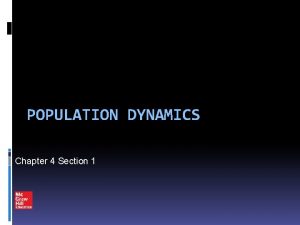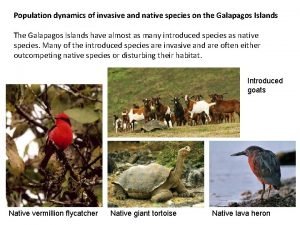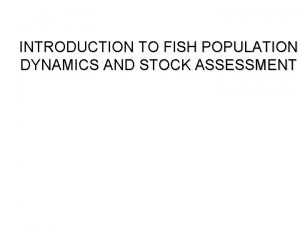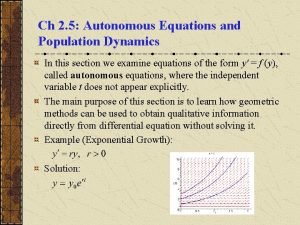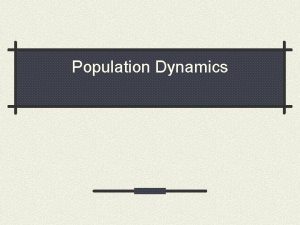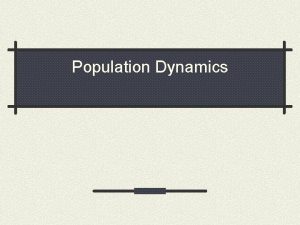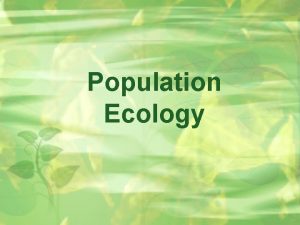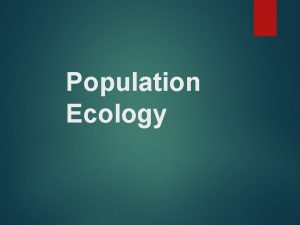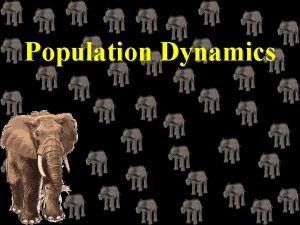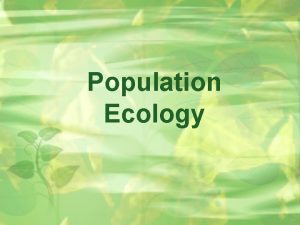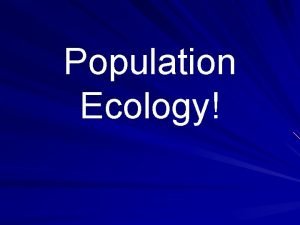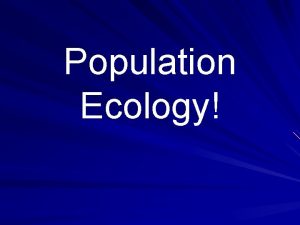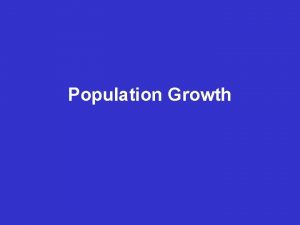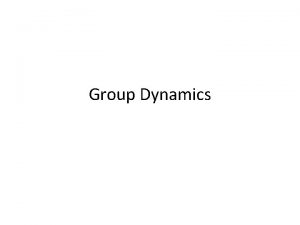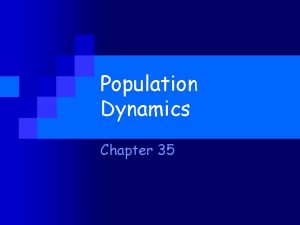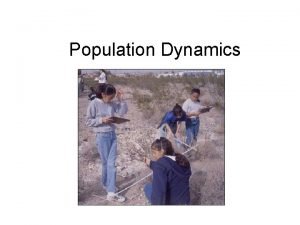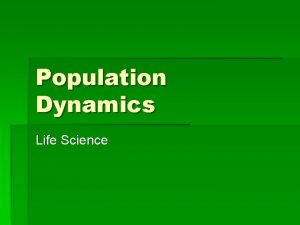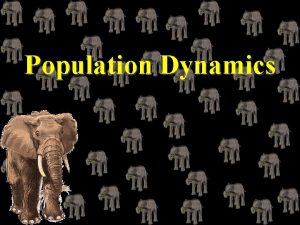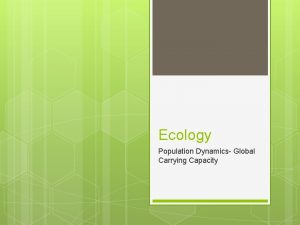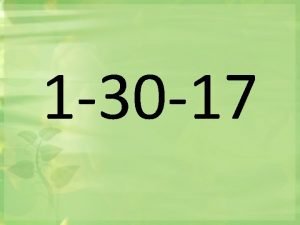Population Dynamics Population Dynamics Population all the individuals























- Slides: 23

Population Dynamics

Population Dynamics Population: all the individuals of a species that live together in an area

Population Dynamics Three Key Features of Populations • Size • Density • Dispersion • (clumped, even/uniform, random)

Three Key Features of Populations 1. Size: number of individuals in an area

Three Key Features of Populations Growth Rate: Birth Rate (natality) Death Rate (mortality) How many individuals are born vs. how many die Birth rate (b) − death rate (d) = rate of natural increase (r).


Three Key Features of Populations 2. Density: measurement of population per unit area or unit volume Formula: Dp= N S Pop. Density = # of individuals ÷ unit of space


4 Factors that affect density 1. Immigration- movement of individuals into a population 2. Emigration- movement of individuals out of a population

4 Factors that affect density 3. Density-dependent factors- Biotic factors in the environment that have an increasing effect as population size increases Ex. disease competition parasites

4 Factors that affect density 4. Density-independent factors. Abiotic factors in the environment that affect populations regardless of their density Ex. temperature storms habitat destruction drought

Factors That Affect Future Population Growth Immigration Natality + + Population Emigration - Mortality

Three Key Features of Populations 3. Dispersion: describes their spacing relative to each other • clumped • even or uniform • random

clumped even (uniform) random

Population Dispersion

Other factors that affect population growth Limiting factor- any biotic or abiotic factor that restricts the existence of organisms in a specific environment. n EX. - Amount of water Amount of food Temperature

Other factors that affect population growth Carrying Capacity- the maximum population size that can be supported by the available resources There can only be as many organisms as the environmental resources can support

Carrying Capacity Nu m J-shaped curve (exponential growth) Carrying Capacity (k) b S-shaped curve (logistic growth) e r Time

EXPONENTIAL VERSUS LOGISTIC POPULATION GROWTH • In an ideal environment (one that has no limiting factors) populations grow at an exponential rate. The growth curve of these populations is smooth and becomes increasingly steep over time (left). • However, for all populations, exponential growth is curtailed by factors such as limitations in food, competition for other resources, or disease. • As competition increases and resources become increasingly scarce, populations reach the carrying capacity (K) of their environment, causing their growth rate to slow nearly to zero. This produces an S-shaped curve of population growth known as the logistic curve (right).



Human Population Growth

Population Ecology https: //www. youtube. com/watch? v=RBOsq m. BQBQk https: //www. youtube. com/watch? v=E 8 dk. W QVFAo. A
 Population ecology section 1 population dynamics
Population ecology section 1 population dynamics Population ecology section 1 population dynamics answer key
Population ecology section 1 population dynamics answer key Population ecology section 1 population dynamics
Population ecology section 1 population dynamics Population ecology section 1 population dynamics
Population ecology section 1 population dynamics Name all the lines
Name all the lines Chapter 4 section 1 population dynamics
Chapter 4 section 1 population dynamics Chapter 4 population ecology answer key
Chapter 4 population ecology answer key Galapagos
Galapagos Fish population dynamics and stock assessment
Fish population dynamics and stock assessment Autonomous equations and population dynamics
Autonomous equations and population dynamics Hình ảnh bộ gõ cơ thể búng tay
Hình ảnh bộ gõ cơ thể búng tay Frameset trong html5
Frameset trong html5 Bổ thể
Bổ thể Tỉ lệ cơ thể trẻ em
Tỉ lệ cơ thể trẻ em Chó sói
Chó sói Tư thế worm breton
Tư thế worm breton Chúa yêu trần thế
Chúa yêu trần thế Môn thể thao bắt đầu bằng chữ đua
Môn thể thao bắt đầu bằng chữ đua Thế nào là hệ số cao nhất
Thế nào là hệ số cao nhất Các châu lục và đại dương trên thế giới
Các châu lục và đại dương trên thế giới Công của trọng lực
Công của trọng lực Trời xanh đây là của chúng ta thể thơ
Trời xanh đây là của chúng ta thể thơ Cách giải mật thư tọa độ
Cách giải mật thư tọa độ Phép trừ bù
Phép trừ bù





